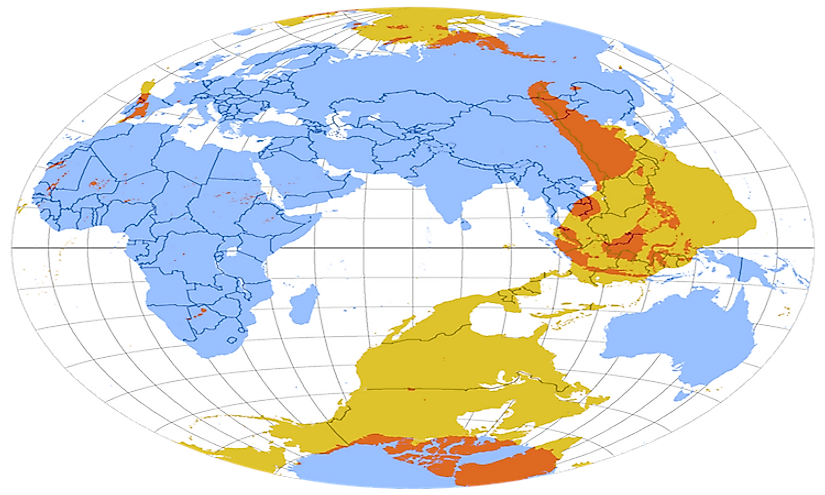What Is An Antipode In Geography?

In Geography, the antipode of a place is the point found on the surface of the earth which is diametrically opposite to it. A pair of antipodes are two points that are opposite to one another on the surface of the earth and are connected by a straight line that runs through the Earth's center. The antipodal points can be as far away from one another as possible with a long circle distance of about 20,000 kilometers.
Characteristics Of Antipodes
The latitudes of antipodes have comparable figures despite one being in the north and the other in the south. When it is noon in one antipode, it is midnight at the other while the shortest day coincides with the longest day in the opposite antipode. Midsummer corresponds with midwinter at the other point. However, all these correlations happen except in the tropics and in spite of the asymmetrically shaped time zones and daylight saving time. Sunset and Sunrise do not correspond at antipodal points because of the refraction of sunlight.
Examples Of Antipodes
Australia and New Zealand may be referred to as antipodes with its inhabitants being known as antipodeans. In Ireland and Britain, the antipodes are geographically located in the Pacific Ocean in the southern part of New Zealand. The antipodes gave rise to the term Antipodes Island of New Zealand which are the approximate antipode of London. The Antipodes of Australia are located in the North Atlantic Ocean whereas some regions in Morocco, Portugal, and Spain are antipodal to New Zealand. About 15% of the territorial land is antipodal to another land with an approximate representation of about 4.4% of the Earth's surface. The Malay Archipelago is the largest antipodal land masses. The two largest antipodal areas inhabited by humankind are located in East Asia and South America mainly situated in the eastern regions of China and the northern parts of Argentina and Chile respectively. The Borneo Island is largest mass of land with antipodes entirely located on land situated in the Amazon rain forest whereas the mainland in Australia is the largest landmass whose antipodes are found entirely in water.
The Historical Importance Of Antipodes
The idea of the existence of antipodes dates back to the times of Pomponius Mela, who was a Roman Geographer and the first of his kind. Mela believed that the Earth comprised of two habitable zones namely the South and the North, but they could not contact each other due to the unbearable heat in the equator. However, the term antipodes were introduced during the Early Middle Ages due to Saint Isidore's widely construed encyclopedia. Ongoing discussions about people and places located opposite each other helped bring into understanding the shape of the Earth. Through discussions and medieval disputes on how the Earth is shaped the result was an idea that the Earth is of spherical shape. There are many historical discoveries that were made due to the discovery of antipodes such as opposite antipodal point’s experiences opposite seasons among others.
Transportation Between Antipode Points
While direct transportation from one antipodal point to the other is almost impossible, there are no direct flights between any of the Earth's antipodal regions or anything close to that. Singapore Airlines Flight 21 which was between Newark, New Jersey, and Singapore was the longest nonstop flight covering 15,344 kilometres but was discontinued from November 2013. The flight was approximately 18.5 hours long making it the furthest journey almost made between two antipodal points.











